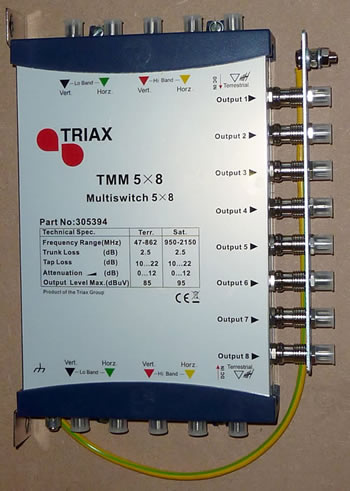Hello,
I live in a small block of flats that we manage ourselves. There's a shared TV aerial on the roof connected to a passive splitter whose cable connectors sit out exposed to the elements. At the moment, none of the cables, splitter nor aerial mast are bonded to earth, but I anticipate that sometime in the near future, we'll have scaffolding over the building, at which point I can call in an electrician to run an earth wire.
Recently the picture quality has started to degrade, so I ordered a new outdoor masthead splitter - a Vision V24-140NG. It comes inside an integrated plastic housing to protect the splitter and F connectors from the weather. On opening the box, I was a bit surprised to see that there doesn't seem to be any earth bonding terminal on the splitter.
Is this normal/to be expected? From the pictures on various websites, I can see that metal indoor splitters generally have an earth terminal, but for outdoor ones, it's hard to tell. Otherwise, what is the usual way of bonding these cables to earth?
I live in a small block of flats that we manage ourselves. There's a shared TV aerial on the roof connected to a passive splitter whose cable connectors sit out exposed to the elements. At the moment, none of the cables, splitter nor aerial mast are bonded to earth, but I anticipate that sometime in the near future, we'll have scaffolding over the building, at which point I can call in an electrician to run an earth wire.
Recently the picture quality has started to degrade, so I ordered a new outdoor masthead splitter - a Vision V24-140NG. It comes inside an integrated plastic housing to protect the splitter and F connectors from the weather. On opening the box, I was a bit surprised to see that there doesn't seem to be any earth bonding terminal on the splitter.
Is this normal/to be expected? From the pictures on various websites, I can see that metal indoor splitters generally have an earth terminal, but for outdoor ones, it's hard to tell. Otherwise, what is the usual way of bonding these cables to earth?



